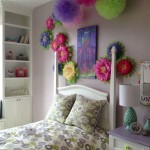How To Decorate Outdoor Space
Decorating an outdoor space can transform it into a welcoming extension of one's home. Whether it's a small balcony or a large garden, careful planning and execution can create a comfortable and aesthetically pleasing area for relaxation and entertainment.
The initial step involves assessing the available space. Careful measurements should be taken to determine the area available for furniture and other decorative elements. This assessment should also consider the space's existing features, such as trees, shrubs, and existing structures.
Establishing a budget is crucial before commencing any decorating project. This budget should encompass all anticipated expenses, including furniture, plants, lighting, and any necessary landscaping materials. A well-defined budget helps prevent overspending and ensures the project remains financially manageable.
Defining the intended purpose of the outdoor space is a vital aspect of the planning process. Will the space primarily serve as a dining area, a relaxation zone, or an area for entertaining guests? Clearly defining the space's purpose informs subsequent design choices.
Choosing a design style provides a cohesive aesthetic for the entire space. Popular styles include modern, traditional, rustic, and Mediterranean. Researching different styles and selecting one that resonates with personal preferences ensures a harmonious and visually appealing outcome.
Selecting appropriate furniture is essential for creating a functional and comfortable outdoor area. Materials should be weather-resistant and durable, such as teak, wrought iron, or aluminum. Consider the number of people the space needs to accommodate and choose furniture accordingly.
Incorporating plants adds life and vibrancy to any outdoor space. Select plants that thrive in the local climate and require minimal maintenance. Consider a mix of textures, heights, and colors to create visual interest. Potted plants offer flexibility and can be easily rearranged.
Outdoor lighting enhances the ambiance and extends the usability of the space into the evening hours. String lights, lanterns, and pathway lighting create a warm and inviting atmosphere. Consider solar-powered options for an environmentally friendly choice.
Adding decorative accessories personalizes the space and adds character. Outdoor rugs, cushions, throws, and decorative sculptures can enhance the overall aesthetic. These accessories should complement the chosen design style and color palette.
Creating defined zones within a larger outdoor space can enhance functionality. A dining area, a lounge area, and a gardening area can coexist within the same space, each serving a distinct purpose. Use furniture placement and landscaping to delineate these zones.
Privacy considerations are essential, particularly in urban environments. Strategically placed plants, trellises, or privacy screens can create a sense of seclusion and enhance the enjoyment of the outdoor space.
Incorporating water features, such as a fountain or a small pond, can add a tranquil element to the outdoor space. The sound of running water creates a relaxing atmosphere and can mask unwanted noise from surrounding areas.
Maintaining the outdoor space is essential to preserve its appearance and functionality. Regular cleaning of furniture and accessories, pruning of plants, and sweeping of debris will keep the space looking its best. A well-maintained space provides long-term enjoyment.
Considering the local climate is crucial when selecting materials and plants. Materials should be able to withstand extreme temperatures, rain, and wind. Choosing plants that thrive in the local climate ensures their longevity and minimizes maintenance requirements.
Utilizing vertical space, particularly in smaller outdoor areas, maximizes the available area. Vertical gardens, hanging planters, and wall-mounted shelves provide opportunities for displaying plants and decorative items without taking up valuable floor space.
Adding a fire pit or outdoor fireplace creates a focal point and provides warmth on cooler evenings. These features can extend the usability of the outdoor space into the colder months and provide a gathering place for family and friends.
Incorporating shade structures, such as pergolas, awnings, or umbrellas, provides protection from the sun and creates a more comfortable outdoor environment. These structures can also define specific zones within the space.
Consider using outdoor fabrics specifically designed for weather resistance. These fabrics are typically treated to resist fading, mildew, and water damage, ensuring longevity and maintaining their appearance over time.
Adding an outdoor kitchen expands the functionality of the space and allows for convenient outdoor cooking and dining. Consider incorporating a grill, a sink, and counter space for food preparation.

6 Decorating Ideas To Make The Most Of A Small Outdoor Space

40 Budget Ideas For Small Outdoor Spaces
Small Patio Inspiration That Will Transform Your Outdoor Space

40 Small Patio Ideas To Create A Cozy Outdoor Space

Designing The Perfect Small Outdoor Space Lifescape Colorado

Create A Backyard Paradise With These 32 Ideas Extra Space Storage

Maximize Outdoor Space Learn How To Decorate A Small Deck Tidymom

Winterproof Your Outdoor Living Space World Perth Wa

77 Patio Decor Ideas Stylish Outdoor Designs And Photos

4 Ways To Decorate Your Outdoor Spaces Urban Northwest







